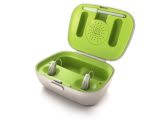How Loud Is Too Loud: Decibel levels of common sounds (part two)
Common Noises and Their Levels
Understanding the levels of sound emmitted from the equipment you use allows you to be aware of when you should be protecting your hearing. You need to protect your hearing, because once it is gone, it is gone. It is not coming back.
Here is a list of common noises and their decibel levels:
Home
- 50dB refrigerator
- 50 – 60dB electric toothbrush
- 50 – 75dB washing machine
- 50 – 75dB air conditioner
- 50 – 80dB electric shaver
- 55dB coffee percolator
- 55 – 70dB dishwasher
- 60dB sewing machine
- 60 – 85dB vacuum cleaner
- 60 – 95dB hair dryer
- 65 – 80dB alarm clock
- 70dB TV audio
- 70 – 80dB coffee grinder
- 70 – 95dB garbage disposal
- 75 – 85dB flush toilet
- 80dB pop-up toaster
- 80dB doorbell
- 80dB ringing telephone
- 80dB whistling kettle
- 80 – 90dB food mixer or processor
- 80 – 90dB blender
- 80 – 95dB garbage disposal
- 110dB baby crying
- 110dB squeaky toy held close to the ear
- 135dB noisy squeeze toys
Work
- 40dB quiet office, library
- 50dB large office
- 65 – 95dB power lawn mower
- 80dB manual machine, tools
- 85dB handsaw
- 90dB tractor
- 90 – 115dB subway
- 95dB electric drill
- 100dB factory machinery
- 100dB woodworking class
- 105dB snow blower
- 110dB power saw
- 110dB leafblower
- 120dB chain saw, hammer on nail
- 120dB pneumatic drills, heavy machine
- 120dB jet plane (at ramp)
- 120dB ambulance siren
- 125dB chain saw
- 130dB jackhammer, power drill
- 130dB air raid siren
- 130dB percussion section at symphony
- 140dB airplane taking off
- 150dB jet engine taking off
- 150dB artillery fire at 500 feet
- 180dB rocket launching from pad
Recreation
- 40dB quiet residential area
- 70dB freeway traffic
- 85dB heavy traffic, noisy restaurant
- 90dB truck, shouted conversation
- 95 – 110dB motorcycle
- 100dB snowmobile
- 100dB school dance, boom box
- 110dB disco
- 110dB busy video arcade
- 110dB symphony concert
- 110dB car horn
- 110 - 120dB rock concert
- 112dB personal cassette player on high
- 117dB football game (stadium)
- 120dB band concert
- 125dB auto stereo (factory installed)
- 130dB stock car races
- 143dB bicycle horn
- 150dB firecracker
- 156dB capgun
- 157dB balloon pop
- 162dB fireworks (at 3 feet)
- 163dB rifle
- 166dB handgun
- 170dB shotgun
Perceptions of increases in decibel level
The list below gives you an idea of how noticable a change in decibel level will be to you:
- 1dB – Not noticable
- 3dB – Noticeable to humans
- 5dB – Clearly noticeable change
- 10dB – About twice as loud
- 20dB – About four times as loud
Decibels are measured on a logarithmic scale, which means that the difference between values increases as the values get larger. For example, the difference between 10dB and 20dB is smaller than the difference between 100dB and 110dB. Logarithmic values are used to make reading what would be large number much easier. If decibels were rated on a linear scale, i.e. the difference between 10dB and 20dB would be the same as the difference between 100dB and 110dB, then instead of writing 100dB we would have to write 10000000000dB.
Protecting Your Hearing
Like I said, once it is gone, it is gone, so take proper steps to protect your hearing your older self will thank you. Here are some tips to help you protect your hearing daily:
- Use earplugs or ear muffs when working; The louder the noise and the longer you're exposed to it, the greater the chance of hearing loss. Protect your ears on the job (and on the DIY job) with ear protectors – earplugs or earmuffs – and get away from the noise as quickly or as often as you can.
- Turn down the damned music: You really need to think about the volume that you are listening to your music at. Don't listen to your personal music player at very high volumes, If the music is uncomfortable for you to listen to, or if the person next to you can hear the music from your headphones it is too damned loud.
- Use the 60:60 rule: The 60:60 rule is to listen to your personal music player at 60% of the max volume for 60 minutes. All MP3 players iPods and smart phones bought within the EU have a smart volume feature. Generally when you try to put the volume up past a certain level it will tell you you are passing the safe level. Or it will restrict the volume to a safe level. So use it and don't turn it off.
- Wear headphones: For listening to music, try to choose noise-cancelling headphones, or go for muff-type headphones. These block out background noise and allow you to have the volume lower. Ear-bud style headphones and in-the-ear headphones are less effective at drowning out background noise.
- Turn down the volume: Be awre of the volume of your device, turn down the volume on your TV, radio or hi-fi a notch. Even a small reduction in volume can make a big difference to the risk of damage to your hearing. A good rule of thumb is that if you need to shout to be heard above the sound, it's too loud.
- Use earplugs when you’re listening to live music: Decent sound filtering ear-plugs are available easily. They can reduce average sound levels by between 15 and 35 decibels depending on the type or filter. They won't change the fidelity of the music, just lower the level of sound. You can even invest in custom sets for about £120. If you like live music, they are well worth investing in.
- Don't put up with work noise: If you’re experiencing noise at work, talk to your human resources (HR) department or your manager and ask for advice on reducing the noise and getting hearing protection.
- Wear ear protectors: Wear ear protectors (earplugs or earmuffs) if you are using noisy equipment such as power drills, saws, sanders or lawn mowers.
- Be careful in the car: Listening to music in a confined space increases the risk of hearing damage. Don’t listen to music too loud for too long
What we do
We like giving good advice, we also like the idea that we can somehow get people to protect their hearing. We also give advice on hearing devices and discuss hearing aid technology. If you are interested in hearing Aids, their types and technologies, take a look at our consumer hearing aid advice guide. It details types, advantages and disadvantages, technology levels and features of hearing instruments in clear and easy to understand language.
If you like what you see, share it so others can benefit
Enjoy this article? You might find these interesting
Looking For Hearing Aids or A Hearing Test?
We can arrange a consultation with a trusted Independent hearing healthcare professional in your area








